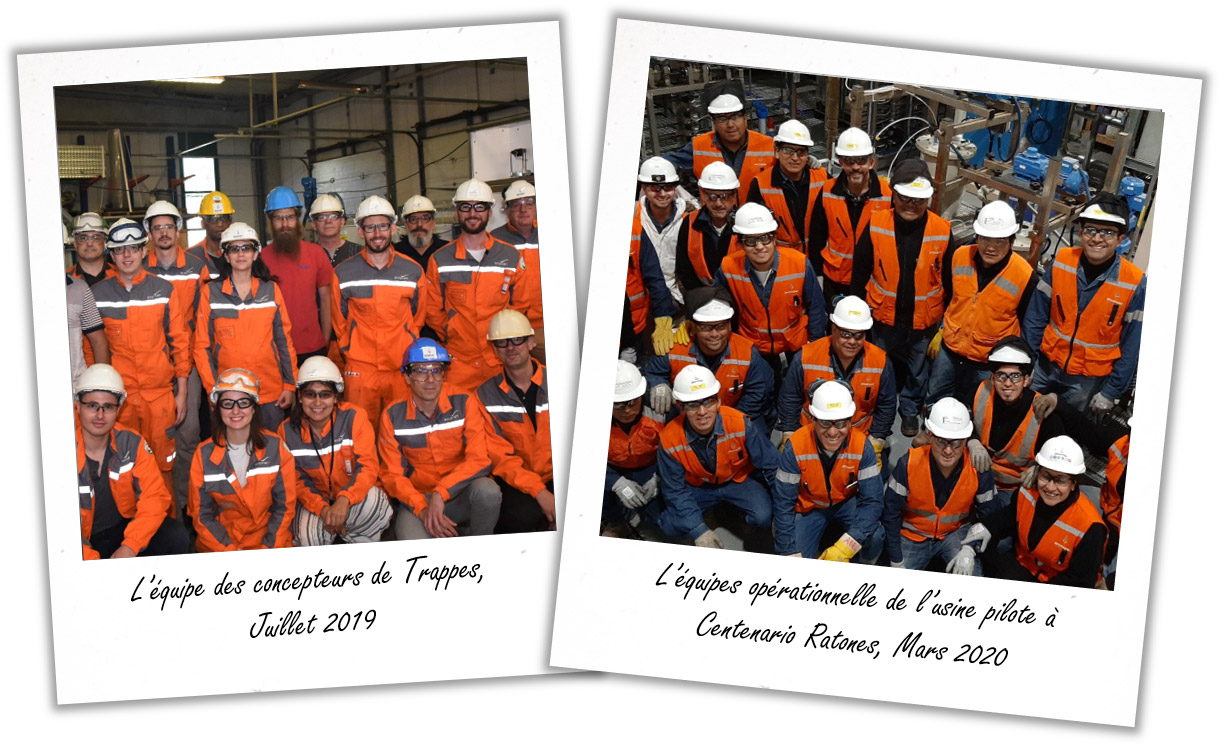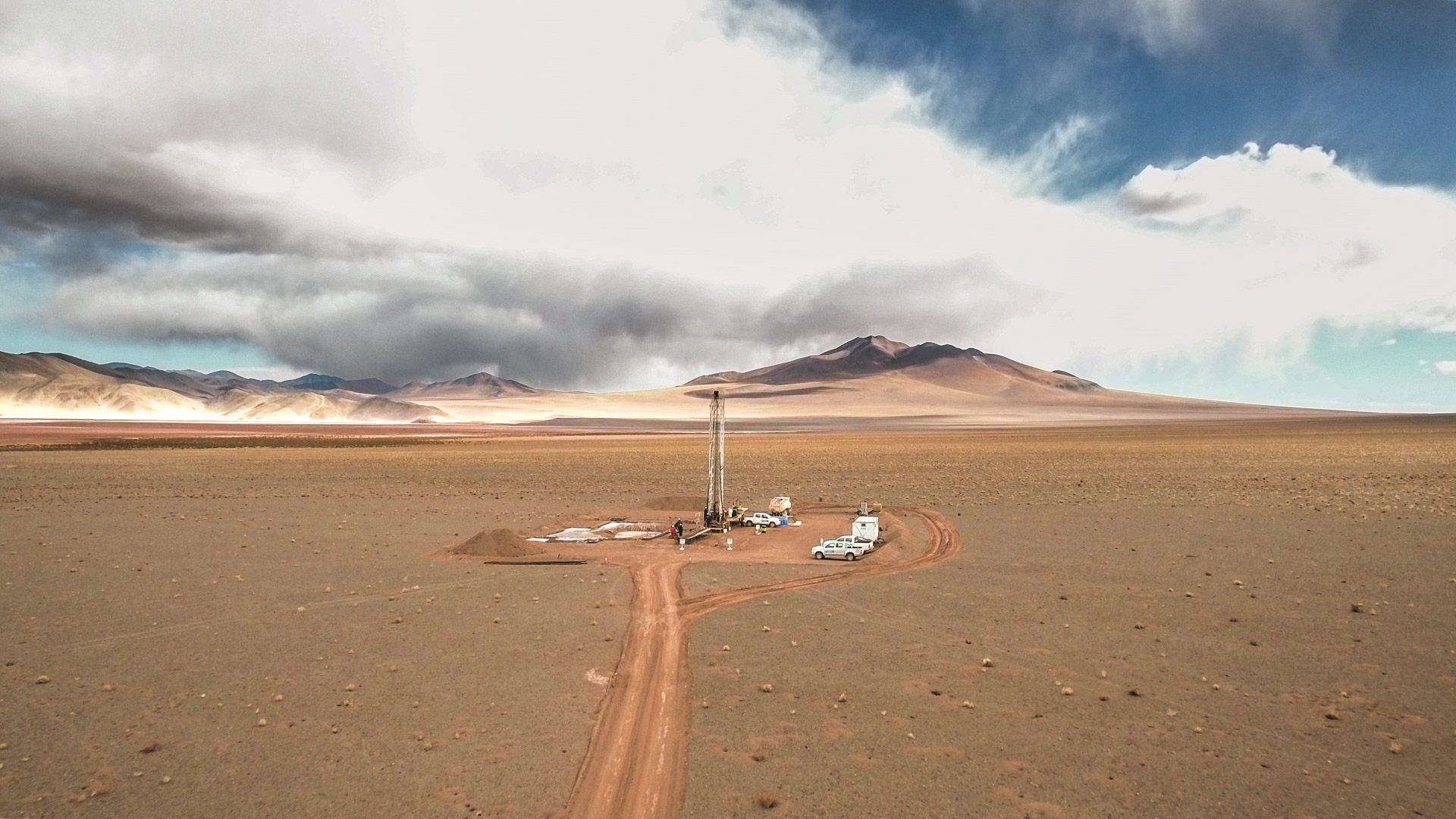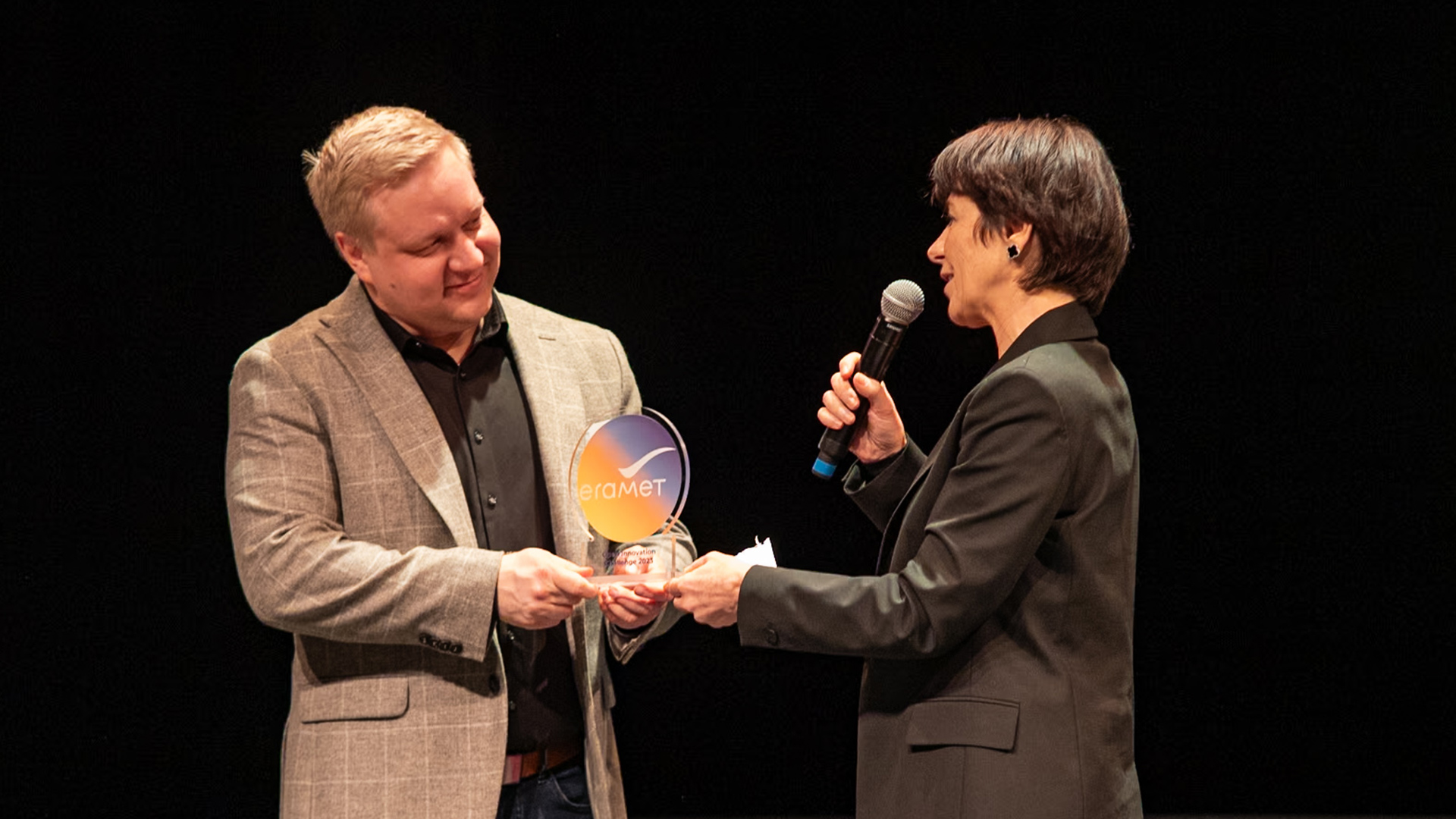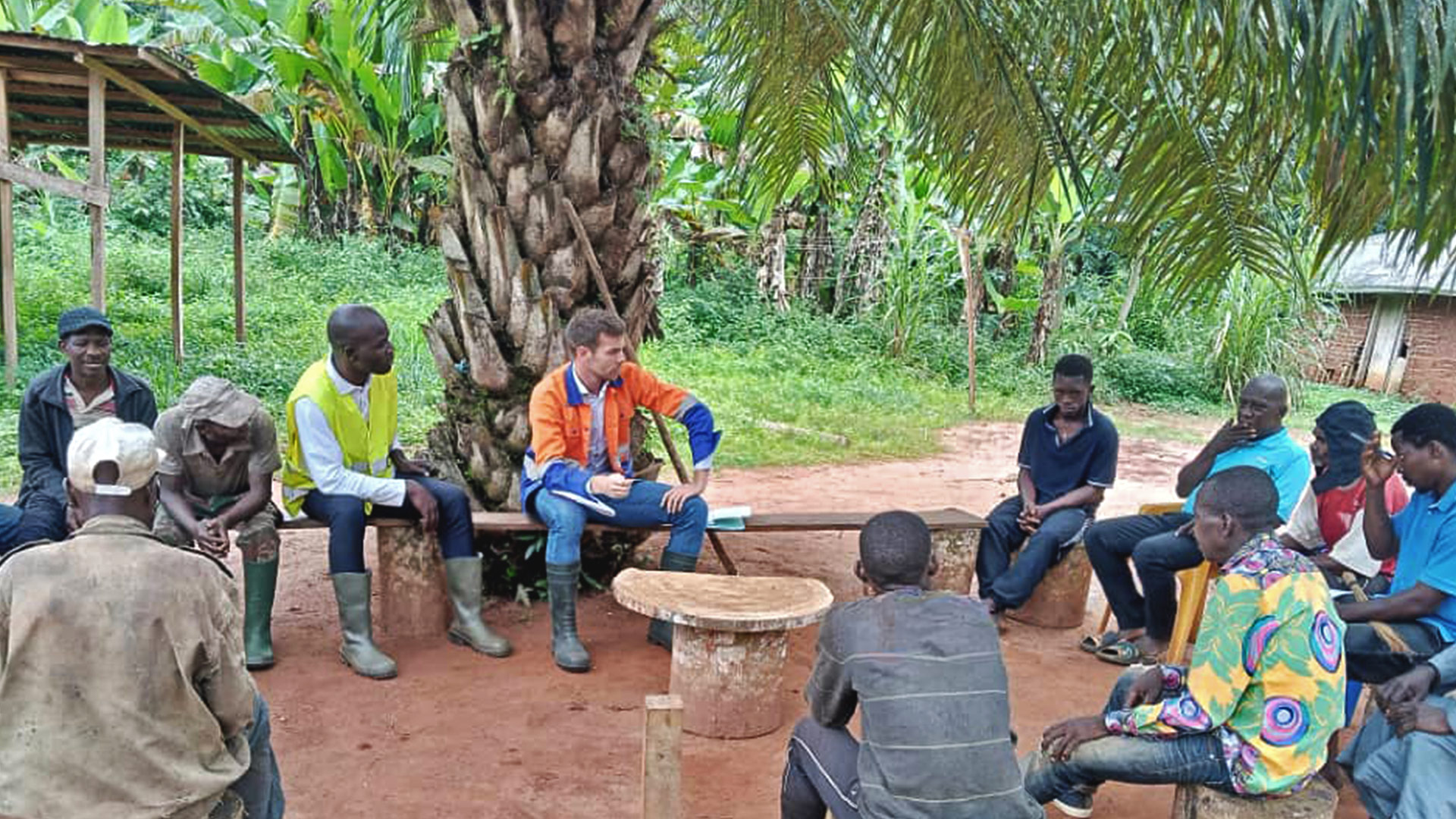January 21, 2019. Trappes, France (altitude: 168 m). Under cover of snow, more than 15 tons (152 mk) of equipment leave the warehouse of the lithium extraction unit, bound for Buenos Aires. Fabien Burdet and Denis Beltrami, the “fathers” of this unit, watch on with tearful eyes, proud of everything that has been accomplished by the team of technicians and engineers that contributed to its design. A second load will follow five months later; Emilie Beaujard hard at work getting it ready in France, along with her counterpart in Argentina, Santiago Murphy. The shipment travels 11,000 km: two months at sea, followed by 15 days on the road. To avoid crossing La Puna at -25°, the convoy of 6 container trucks leaves Buenos Aires in March. They travel 1,700 km across the northwest, through cowboy country, before embarking on the last 300 km between Salta, the provincial capital (altitude: 1,270 m), and Salar Ratones, the mining concession of Eramine Sudamerica, an Eramet subsidiary. 3,800 m above sea level.
To reach the site, the 6 trucks wind their way along the slopes of craggy, cactus-dotted mountains, harried by the rough Andean climate. They pass without incident through San Antonio de los Cobres (altitude: 3,760 m), a city of 5,500 people. The paved roads stop there. From here on out lie 150 km of narrow trails overlooking wide valleys, with less and less vegetation as they go. The trucks slip through Abra de Gallo, a mountain pass 4,630 m above sea level. Anyone who steps out of their vehicle to get that all-important selfie may feel just a little bit tipsy. The convoy carefully negotiates the bends and curves, where they finally encounter the year-round snow caps and the dazzling plains of the first salt flats. The long descent toward the site, which is “only” 3,750 m above sea level, takes them past peaceful llamas, small ostriches, flamingos, foxes and vicunas (which love to eat whatever small bits of grass can be found in the region). The foxes are drawn to the rats (ratones), which live in an endless series of tunnels well above the 400m depth where our teams drill for precious lithium brine. The camp of geologists, who were the pioneers of the project, emerges over the horizon, stamped with the initials “CT” (for Christophe Thillier) Then, 25 km onward, 13,000 km from Trappes, the 26 T of extraction unit equipment arrive at their destination, after nearly three months of travel. The resulting pilot plant will one day become a training center.
Now it’s time to set up the industrial project, an arduous journey in itself.
At 3,800 m, the extraction unit is producing excellent results.
The technicians and engineers from Eramet Ideas join in this journey, working with an assortment of skids, pipes, and columns…and the team led by Jean Jourde, head of the pilot plant and soon-to-be training center. Together with the construction team (Roman Ramirez and Jose Alvarado), they re-assemble the impressive machinery in record time, while passing down everything they know to their new colleagues from Eramine Sudamerica. The team has a rough go of it, as they sometimes have to manufacture new parts or work out a few kinks. But eventually, the whole assembly is commissioned by Tarik Hallab and Alexandre Charlot. The upstream portion, completed in October, produces concentrated brine using a material co-developed by Eramet and the IFPEN. The downstream portion, meanwhile, produces its first batch of lithium carbonate in December. As of mid-January, the upstream and downstream portions operate automatically, producing a continuous stream of lithium carbonate from raw brine, which is pumped up from the salt flats at a depth of 250 m. In the end, the team rose to the challenge, working day and night in two teams. All without incident.
The process, which was invented by Eramet Ideas and pilot-scale tested before its transfer to a higher altitude, achieved an excellent yield in mid-March (with up to 90% of the lithium recovered). Its competitiveness places it in the first quartile of the cash cost curve for the industry, whose main competitors are located not far from Centenario Ratones, in the lithium triangle.
The deposit is a great asset, and the pilot plant is its cornerstone. The plant will continue running in order to further improve the process by developing the team’s skills. The goal is to be ready to relaunch the project once all the necessary conditions are finally met. This time, the project will embark on a new, commercial journey, which, as always, will be managed by our teams.






